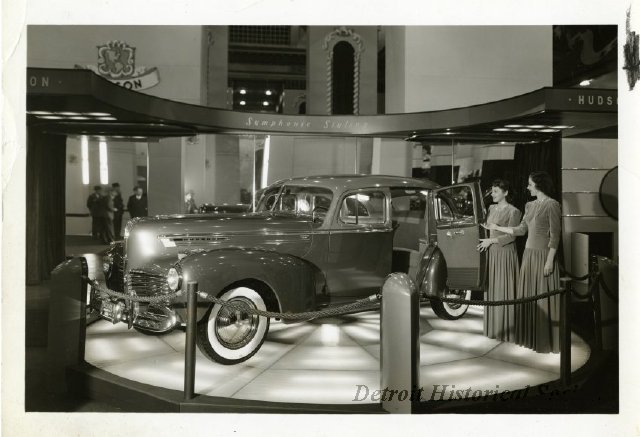The Hudson Motor Car Company, often called simply Hudson Motors, was founded in 1909. Joseph L. Hudson, owner of the renowned Detroit department store, was the primary investor in the company, created by eight individuals, including Roy Chapin and Howard Coffin, former employees at Olds Motor Works. In the first year, Hudson Motors sold 4,000 of their original four-cylinder models. This represented the highest number of first-year-sales of any car company to that point, and quickly earned Hudson respect in the American auto market.
Moving to a factory on the corner of Jefferson Avenue and Conner Street in 1910, Hudson Motors sought to differentiate itself from hundreds of other auto companies. By 1913 they released a signature new engine, the Super Six. This six-cylinder engine offered significantly more power than the four-cylinder configurations common at the time. It became the power plant used in most Hudson models through 1957 and led to the claim of “world’s largest manufacturer of six-cylinder cars.” The powerful Super Six distinguished itself in 1916, when Hudson automobiles broke records for the first two-way transcontinental trip and fastest climb to the top of Pike’s Peak.
The large engine and manufacturing quality were competitive gambles. Hudson was a medium-priced brand, costing more than Fords and Chevrolets, but less than luxury marques like Packard. Hudson successfully captured more market share in 1919 with the release of its Essex line, a cheaper variant of the Hudson body that began as a four-cylinder but changed to the Super Six by 1924. The popularity of Hudson and Essex grew throughout the 1920s, and production peaked in 1929 with 300,000 cars made that year. This ranked Hudson third among American manufacturers, but by comparison, that same year Ford sold 1.5 million vehicles and Chevrolet 1.3 million.
Slow decline came with the Great Depression, and Hudson Motors fought to innovate and adjust in the new market. It introduced the Electric Hand transmission in 1935, a revolutionary device that employed a button to shift gears instead of the usual stick shift, though it became notorious for operating incorrectly. In 1936 the company introduced a newly-developed independent front suspension called the “rhythmic ride.” After the death of Roy Chapin that same year, A.E. Barit was named president, having started at the company as a stenographer in 1910. Under Barit’s management Hudson was able to realize a small turn-around in profits, but ultimately continued to lose market share.
In 1954, Hudson Motor Car Company merged with Nash-Kelvinator Corporation resulting in the formation of American Motors Corporation, the biggest corporate company merger ever at the time. A small number of cars were released with the Hudson badge due to its continuing popularity and reputation for quality, but three years later the name was finally dropped by American Motors, marking the end of the Hudson brand of automobile.

